Diamonds, renowned for their allure and value, captivate everyone’s fascination. In this comprehensive article, we aim to equip you with essential knowledge about diamond pricing, quality factors, colors, and more.
When it comes to determining a diamond’s size, the most direct and fundamental answer lies in millimeters (mm). The size of a diamond is measured using millimeters, which provides a rough approximation of its carat weight.
While this answer serves as a starting point, we encourage you to delve further into our article to gain insights on how to calculate the price, assess the size, and identify the best quality diamonds at competitive prices.
Let’s delve into the details and explore the world of diamonds together!
DESIGN YOUR OWN ENGAGEMENT RING: START WITH A SETTING OR START WITH A DIAMOND. IT’S REALLY UP TO YOU!
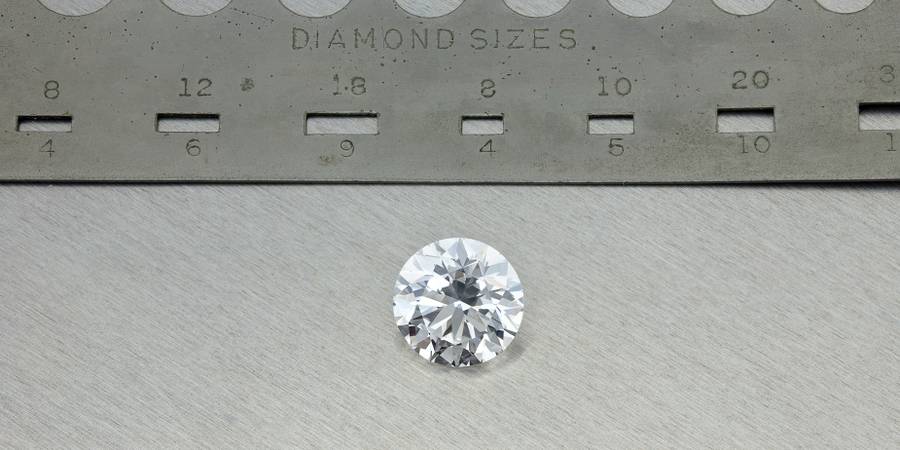
How Can You Tell The Size of A Diamond? All Informations You Need To Know
Let’s start from the very beginning!
The weight of a diamond is defined by the four C’s, with carat being the measure used. Carats are tiny units of weight, equivalent to 200 milligrams, that are employed to quantify the weight of diamonds.
Each carat is further divided into 100 points, and a half-carat diamond is often referred to as a “50-pointer.” Gemologists can easily determine the carat weight of a diamond using advanced measuring tools, making it the most straightforward of the four C’s.
However, it’s important to note that a diamond’s weight doesn’t always correspond directly to its size. This distinction is crucial to understand. Two diamonds with the same carat weight can have significantly different values based on various factors, including their size.
This is because, even if they have the same weight, one diamond may appear larger when set compared to the other. This difference in perceived size can have a substantial impact on the diamond’s value.
Before the adoption of the carat as a standardized measure in 1907, diamonds were measured using various methods. At one point, carob seeds were used because it was mistakenly believed that their size was relatively uniform.
Over time, the carat weight measurement became standardized, ensuring that it serves as a universal reference point on diamond certificates, regardless of the certifying organization.
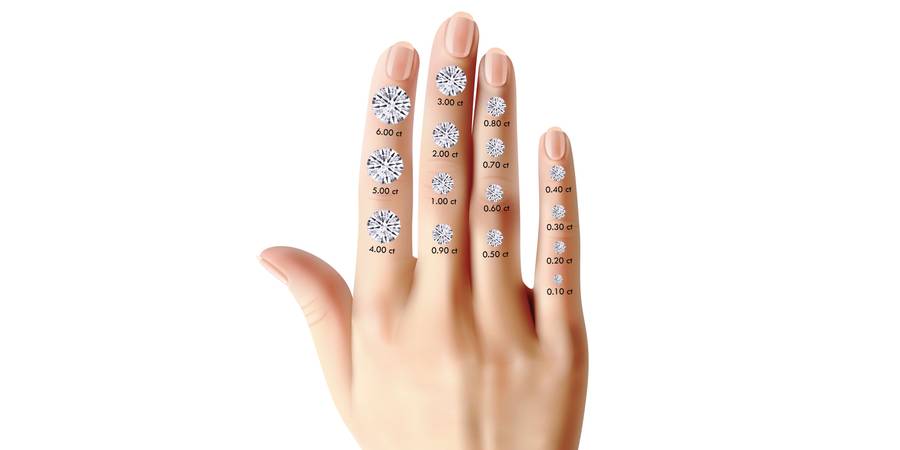
What Does A Diamond’s Carat Mean?
Carats serve as a globally accepted measurement unit for the weight of diamonds in jewelry. For instance, a diamond weighing 5 carats will be equivalent to one gram, as each carat represents 200 milligrams.
It’s important to note that carat weight is related to the diamond’s weight and not its size, contrary to popular belief. When multiple stones are present in a piece of jewelry, their carat weights are often combined to determine the total carat weight.
To calculate the total diamond weight of a necklace, for example, one would need to consider the combined carat weight of all the stones present in the necklace.

Diameter Of A Diamond
When it comes to diamonds, the unit of measurement used is the carat (represented as ct.), which denotes the weight of the stone rather than its size. But have you ever wondered why it’s called a carat?
The term “carat” originated from the use of carob seeds, which were used as the first measurement unit by diamond traders. Over time, the name “carat” became synonymous with diamond weight.
Nowadays, a carat is precisely equivalent to 0.2 grams, roughly the weight of a paper clip. It’s important to note that the term “karat,” often associated with gold purity, has no connection to carat weight in diamonds.
While two diamonds may have the same carat weight, their prices can vary significantly depending on other factors such as cut, color, and clarity.
When searching for a specific diamond, carat weight often becomes a primary consideration until the desired size is achieved. However, other factors will also come into play and become more significant.
Interestingly, many men can tell you the price of a diamond, while many women can often recall the carat weight and shape of their ideal diamond.
As the carat size of a diamond increases, its price tends to rise at an accelerated rate. This is because larger diamonds become increasingly rare. Rough stones large enough to produce a finished 1-carat diamond are scarce, with less than one million available. As a result, both the overall price and the price per carat tend to increase as carat weight rises.
So, let’s explore and discuss diamonds categorized by their carat weight!
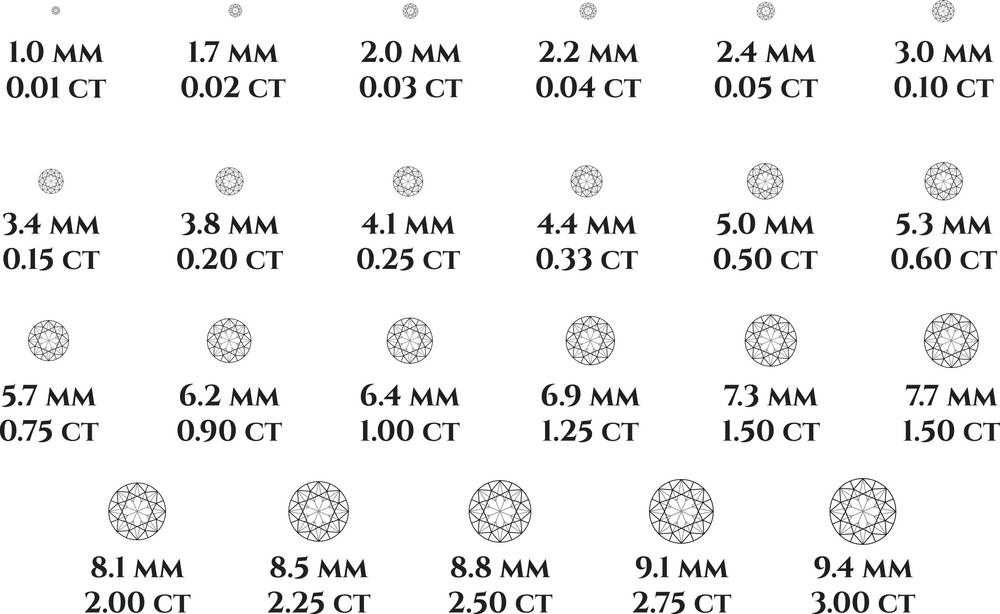
Diamonds in the range of 0.10 to 0.40 carats:
Smaller diamond carat sizes tend to be more affordable and lightweight. Even stones smaller than 5mm in this category can exhibit excellent clarity and brightness, resulting in brilliant diamonds. Opting for delicate and lighter diamond carats can create stunning promise rings. The size and weight of these stones make them ideal for stackable bands, allowing for a visually pleasing aesthetic. Smaller carat sizes are also a great choice for stunning diamond earrings, especially for a minimalist style.
For reference, the typical diameter of a 1-carat round diamond is 6.5mm, while a 1.25-carat diamond measures around 6.8mm. Square-cut diamonds, such as princess, cushion, or Asscher, have a diameter of approximately 5.5mm for 1 carat and 6mm for 1.25 carat.
Diamonds in the range of 0.50 to 0.90 carats:
This carat weight range is commonly chosen for engagement rings, as the stones are noticeable without being overly expensive. Due to their popularity, one-carat stones often come with increased prices. A popular choice for this carat range is a halo setting, where the center stone is encircled by smaller stones, creating the illusion of a larger diamond and enhancing its brilliance. Diamond carat weight becomes crucial when looking for eye-catching engagement or special occasion rings.
Diamonds in the range of 1.0 to 1.5 carats:
At these carat weights, the value begins to increase, making larger and more noticeable stones a standard choice for standout jewelry. It is possible to find stunning-looking stones with lower clarity or color grades at a lower price. Choosing a different-shaped stone instead of a round diamond can save you money, as round diamonds tend to be more sought-after and, consequently, more expensive.
Diamonds in the range of 2.0 to 5.0 carats:
These carat weights undoubtedly attract attention due to their impressive size. A 2-carat diamond is considered substantial, as the average weight for diamond engagement rings is around 0.9 carats. A 2-carat diamond in an engagement ring is conspicuous and captivating, drawing attention wherever it is worn. However, obtaining a stone of this size with high clarity and pure color can be challenging, making them rare and expensive.
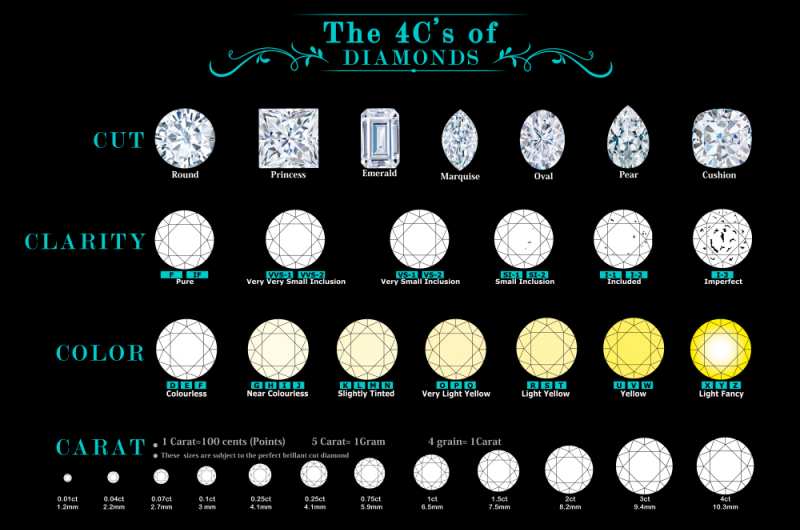
The Diamond’s 4 C’s
The four C’s of diamonds encompass the essential properties that determine a diamond’s quality.
Diamond Color: This refers to the hue and color present in the stone.
Diamond Clarity: It describes the level of imperfections or flaws in the diamond.
Diamond Cut: The diamond’s cut refers to the technique used to shape and polish the gem. It greatly influences the diamond’s brightness, which is distinct from its shape.
Diamond Carat: Carat is used to measure the weight of a diamond, as mentioned earlier in this article.
As the carat size of a diamond increases, its importance and value also increase. However, it’s important to note that carat in diamonds is different from the carat used to measure the proportion of pure gold in jewelry, which is referred to as 18kt gold.
Understanding the four grading characteristics of a diamond, including its carat size, empowers you to confidently choose your next diamond. It’s worth noting that the price of a diamond significantly increases as the carat size increases.
Due to the rarity and higher demand for larger diamonds, prices tend to rise with increasing carat size.
However, a diamond’s carat weight alone doesn’t determine its size perception. Two diamonds with the same carat weight can have different sizes if their cuts vary, with one having a deeper cut than the other.
In addition to the four C’s, a diamond’s dimensions, such as being round, square, oval, or rectangular, are described by its length-to-width ratio, which is the ratio of the length divided by the width of the diamond.
Different diamond shapes have recommended length-to-width ratios for optimal aesthetics. Here are some ideal length-to-width ratios for various diamond shapes, resulting in elegant and proportionate diamonds:
- Round: 1.0 to 1.05 length-to-width ratio
- Princess: 1.0 to 1.04 length-to-width ratio
- Cushion: 1.0 to 1.08 length-to-width ratio
- Emerald: 1.3 to 1.4 length-to-width ratio
- Oval: 1.25 to 1.5 length-to-width ratio
- Pear: 1.45 to 1.75 length-to-width ratio
- Marquise: 1.85 to 2.0 length-to-width ratio
Larger diamonds tend to be more expensive due to their rarity and the precision required in cutting to preserve their weight. Additionally, the exact carat weight of a diamond impacts its price. One-carat diamonds are highly sought after, making precise one-carat diamonds more expensive.
Our advice is to consider diamonds just above or below the 1-carat threshold to save money. The same applies to diamonds weighing 1.25 or 1.50 carats, which are quarter- and half-carat sizes. A 1.25-carat diamond will be considerably more expensive than a 1.21-carat diamond of similar quality, even though the size difference is insignificant.
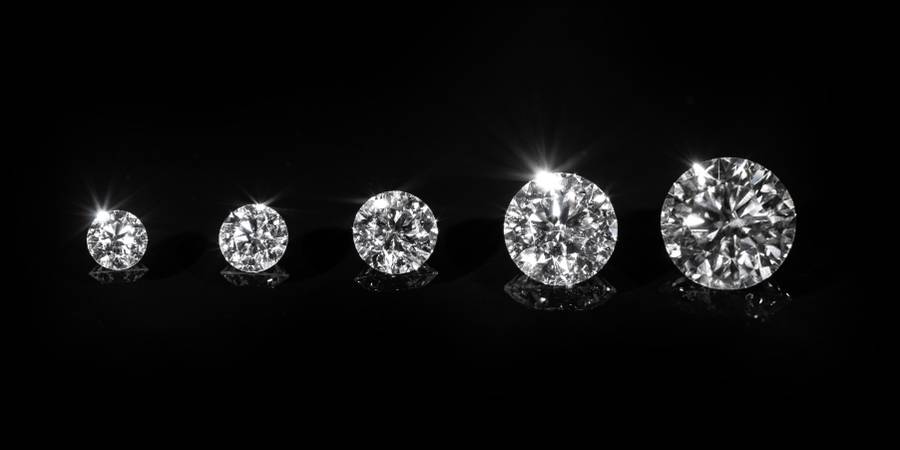
Story About The Biggest Diamond Ever Found
Let’s delve into the fascinating story of the largest diamond ever discovered!
The renowned gem is known as the Cullinan diamond. It was unearthed on January 26, 1905, in the Premier mine located in Cullinan, South Africa, a town known for mining and tourism, situated near Pretoria.
Initially, the Cullinan diamond measured 10.1 centimeters in length, 6.35 centimeters in width, and 5.9 centimeters in depth. At that time, it weighed a staggering 3,106.75 carats (equivalent to 621.35 kg). Quite a remarkable size, isn’t it?
Digging out such a colossal gem required significant effort. The stone was discovered 18 feet below the ground’s surface by Fredrick Wells, the surface manager of the mine. Wells then presented the diamond to Sir Thomas Cullinan, the mine’s founder and chairman.
After acquiring the diamond from Cullinan, the Transvaal Provisional Government decided to gift it to King Edward VII of Britain on his 66th birthday.
Now, here’s the coolest part of the story!
To protect the precious gem during its journey from Africa to London, King Edward orchestrated a clever plan. He arranged for a fake diamond to be shipped on a vessel with detectives on board, diverting any potential thieves’ attention. Meanwhile, the genuine Cullinan diamond was discreetly sent through regular mail, safely enclosed in a simple box.
The intricate task of cutting the Cullinan diamond was entrusted to Joseph Asscher of the Asscher Diamond Company in Amsterdam. Prior to working on the Cullinan, Asscher had already cut the Excelsior Diamond, which was the largest diamond in the world at that time. The process of planning and executing the cutting of the Cullinan diamond took six months.
During the initial attempt to split the diamond in half, Asscher’s steel blade shattered. However, success was achieved on the second try, as the diamond split as intended. Subsequently, Asscher proceeded to divide the Cullinan into nine large stones and approximately 100 smaller fragments.
The remarkable journey and meticulous craftsmanship involved in shaping the Cullinan diamond add to its legendary status in the world of precious gems.
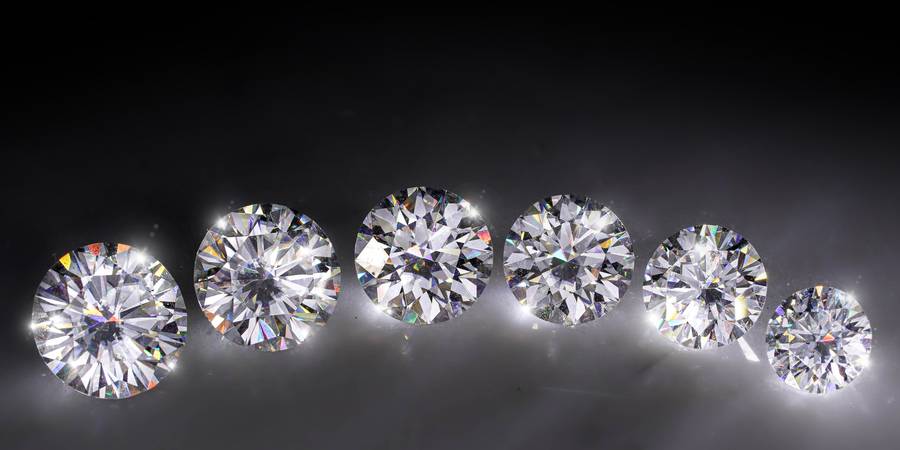
Final Thoughts
As mentioned from the outset, diamonds hold a special place among the most valuable, exquisite, and scarce gemstones.
With that in mind, we have created this post to equip you with all the necessary knowledge about diamond pricing, color grading, quality factors, and much more. One of the most commonly asked questions when it comes to diamonds is, “How can I determine their size?”
To provide a straightforward answer, the size of diamonds is measured in millimeters (mm), which correlates with their carat weight.


